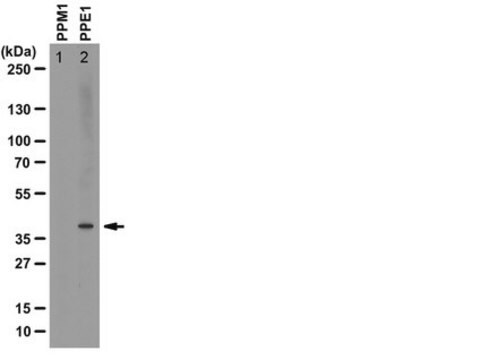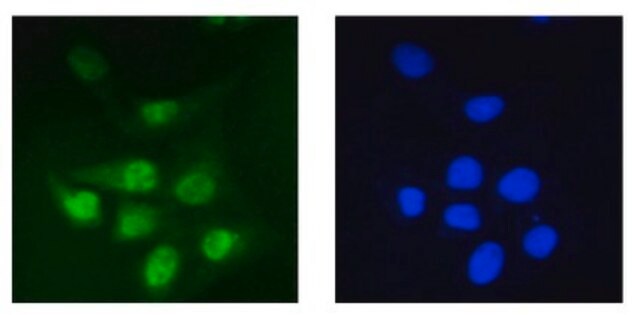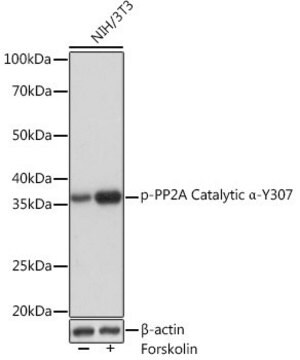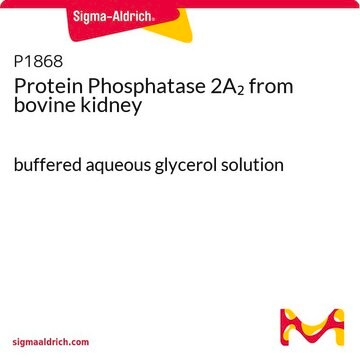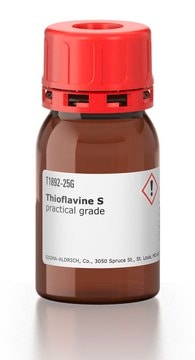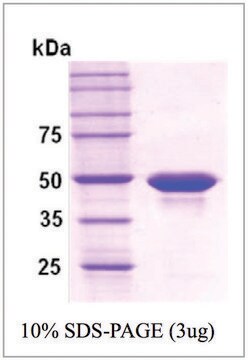MABE1809
Anti-methyl PP2Ac (L309) Antibody, clone 7C10-C5
Synonym(s):
Serine/threonine-protein phosphatase 2A catalytic subunit alpha isoform
About This Item
Recommended Products
biological source
mouse
Quality Level
antibody form
purified antibody
antibody product type
primary antibodies
clone
7C10-C5 (short 7C10), monoclonal
mol wt
calculated mol wt 35.59 kDa
observed mol wt ~35 kDa
species reactivity
yeast, human
packaging
antibody small pack of 100 μL
technique(s)
immunohistochemistry (formalin-fixed, paraffin-embedded sections): suitable
western blot: suitable
isotype
IgG1κ
epitope sequence
C-terminal
Protein ID accession no.
UniProt accession no.
storage temp.
-10 to -25°C
Gene Information
human ... PPP2CA(5515)
General description
Specificity
Immunogen
Application
Isotype testing: Identity Confirmation by Isotyping Test.
Isotyping Analysis: The identity of this monoclonal antibody is confirmed by isotyping test to be mouse IgG1 .
Tested applications
Immunohistochemistry Applications: A representative lot detected methyl PP2Ac (L309) in Immunohistochemistry applications (Leonard, D., et al. (2020). Cell. 181(3); 688-701).
Western Blotting Analysis: A representative lot detected methyl PP2Ac (L309) in Western Blotting applications (Frohner, I.E., et al. (2020). Sci Signal. 13(616); eaax6490).
Note: Actual optimal working dilutions must be determined by end user as specimens, and experimental conditions may vary with the end user.
Physical form
Storage and Stability
Other Notes
Disclaimer
Not finding the right product?
Try our Product Selector Tool.
signalword
Warning
hcodes
Hazard Classifications
Eye Irrit. 2 - Skin Sens. 1
Storage Class
11 - Combustible Solids
wgk_germany
WGK 2
Certificates of Analysis (COA)
Search for Certificates of Analysis (COA) by entering the products Lot/Batch Number. Lot and Batch Numbers can be found on a product’s label following the words ‘Lot’ or ‘Batch’.
Already Own This Product?
Find documentation for the products that you have recently purchased in the Document Library.
Our team of scientists has experience in all areas of research including Life Science, Material Science, Chemical Synthesis, Chromatography, Analytical and many others.
Contact Technical Service